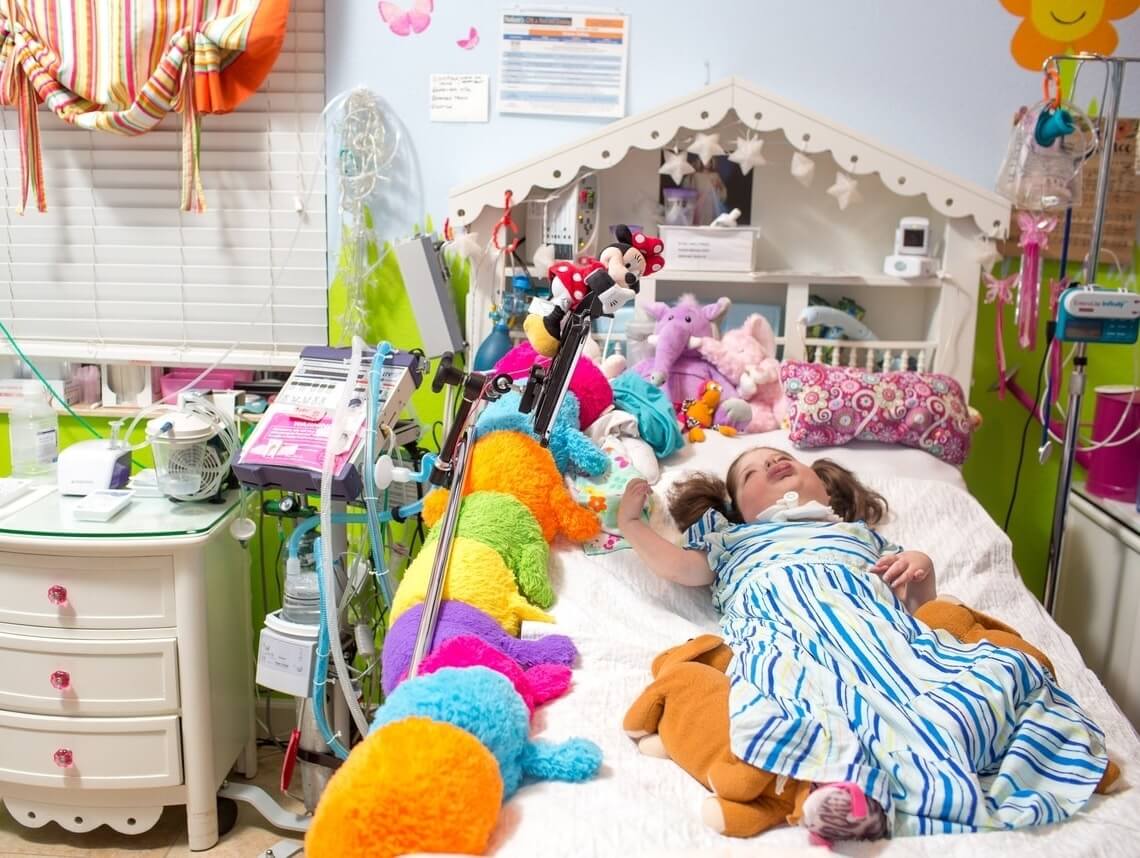Finding out your child needs a ventilator to breathe properly is crushing. Here’s your little baby — regardless of age, they’re always your baby — requiring assistance to do one of the most vital functions. So when it’s time to take your little one home, you may be wondering how to make sure everything goes smoothly. Do you keep the machine connected for 24 hours? What about bath time? What about mealtimes?
10 Pediatric Home Care Tips for Children Who Need a Ventilator
While the concept of getting used to this new normal may feel overwhelming, there are things you can do to make the process easier — for your child and for yourself.
1. Enlist help
The first thing you need to be aware of is that you will need help. Whether from a spouse, co-parent, family members, or caregiver, it’s essential that someone else other than yourself learn homecare tips. This is because it’s not realistic to expect you to be available 100% of the time, especially if your child needs a ventilator through the night. Knowing that you have someone to rely on will make the process easier.
2. Follow your doctor’s instructions
Some children need a ventilator around the clock. Others only need one while they sleep, or for a certain number of hours during the day. Your doctor will give you a schedule, as well as the ventilator settings that best help your child. These settings are established by the doctor through instructions, and the ventilator company will set them. Do not change them on your own and do not let siblings play with the knobs.
3. Write down your child’s daily routine
Prepare a schedule establishing medication times, dosages, times for therapy, time to clean up the tracheostomy, family time, and anything else your child may require on a daily basis. This will help you focus on what needs to get done throughout the day without having to think about it.
4. Never leave your child unattended
If your child requires oxygen therapy through the night, their caregiver should always be next to them — awake, and fully alert. It is possible for emergencies to occur in the blink of an eye, so having someone with your child around the clock can save their life.
5. Keep the batteries fully charged
While most of the time, the ventilator will be hooked up to an electrical outlet, you can also operate it with a battery for trips outside the home. Make sure you always have a backup battery fully charged and that you’re always aware of its location.
6. Arrange the child’s bedroom
Keep a comfortable chair by your child’s bed. This will make it a lot easier for you or a home care nurse to watch your child as they sleep. In addition, keep everything a caregiver would need close by — hand sanitizer, suction machine, essential phone numbers, a humidifier, and an emergency travel bag. Make sure the ventilator is not placed near heater vents.
7. Organize storage
Arrange all medications and all treatment supplies in a way that makes it easy for you or another caregiver to easily read the labels. Circle expiration dates for easy reminders. Make sure there’s adequate lighting near the drawers or cabinets where these supplies are located.
8. Protect your child from infection
Always keep hand sanitizer near the child’s ventilator. Wash your hands before providing therapy. If friends or family members are sick, do not allow them to come into close proximity to your child. These steps are crucial, since a simple cold can cause a child on a ventilator to require hospitalization.
9. Conduct safety checks
When your child is not using the ventilator, review the settings to make sure they haven’t been accidentally changed. Inspect the tubing to make sure it has no bends. Check that there’s enough water in the humidifier. Unplug the ventilator and test it with batteries.
10. Learn to recognize what each alarm means
Ventilator alarms are designed to let you know whenever there’s a change in your child’s breathing pattern. Low-pressure alarms indicate when the ventilator tubing has become disconnected from the tracheostomy tube, that there’s a tear in the tubing, or that there’s a leak in the exhalation valve. High-pressure alarms can be caused by coughing, bent tubes, or your child breathing harder.
Contact Care Options for Kids for Home Health Care
It can be hard to balance your time between work, home, and caring for a child who requires a ventilator. You can feel helpless and want to spend every minute of your day with your child. Homecare providers offer the support you or your loved one needs.
That’s why our team of skilled professionals at Care Options for Kids are here to help. Our home care services offer support in the comfort of your home. We refer loving and competent caregivers to provide customized care for families — from a few hours a day to around-the-clock supervision. Contact us directly to speak with a home health care professional or request a free in-home assessment. Together we can determine the best plan of action to keep your loved ones happy and healthy.
If you are considering pediatric home health care services, contact the caring staff at Care Options for Kids. Call today at (888) 592-5855.






